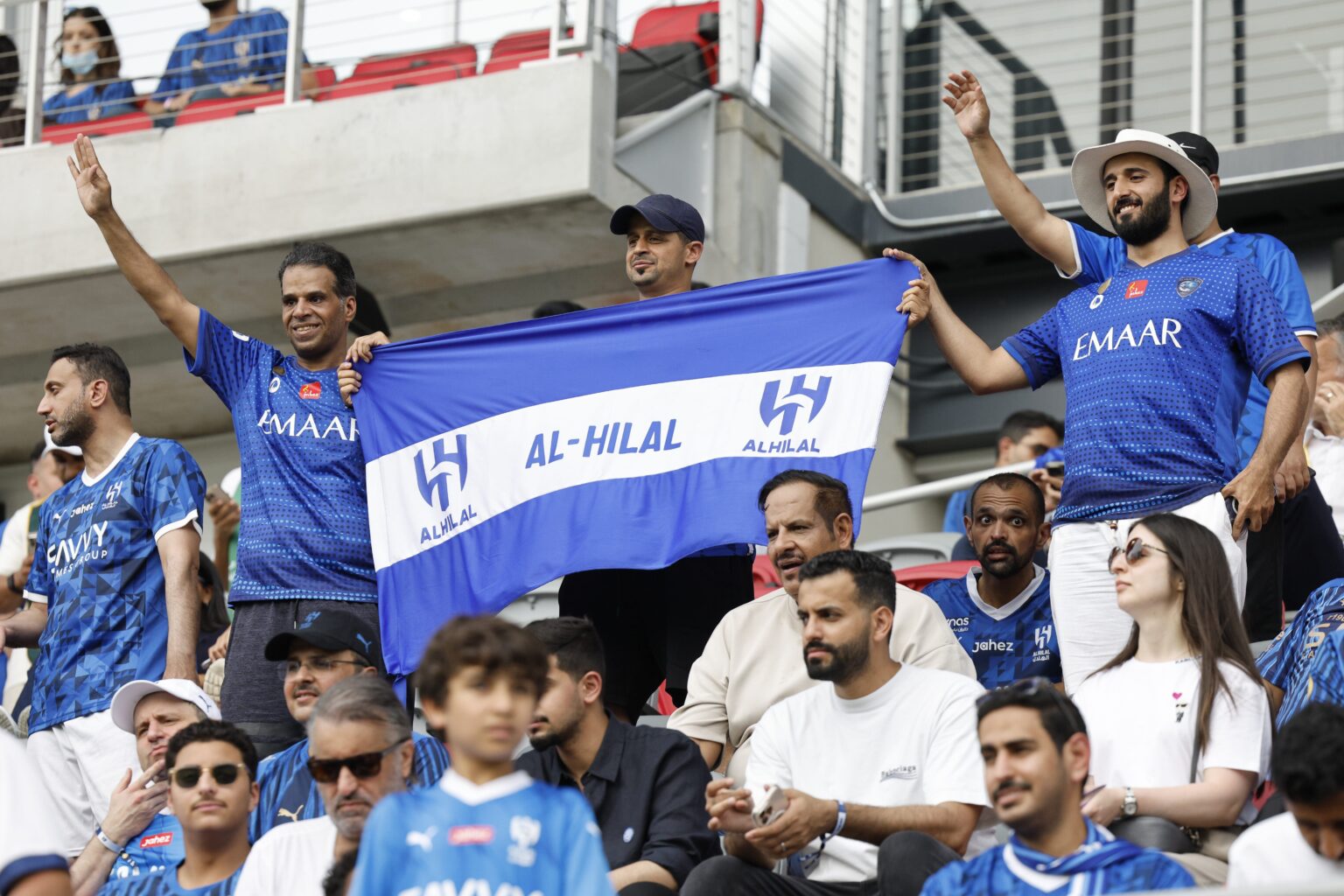Saudi Influence and Global Soccer Dynamics at the U.S. Club World Cup
A Visible Saudi Presence in American Soccer Events
During a recent international soccer tournament held on U.S. soil, the unmistakable influence of Saudi Arabia was on full display. The event, aimed at elevating the profile of global soccer within the United States, was marked by a significant Saudi fan presence and strategic sponsorships. Hundreds of supporters clad in Al Hilal jerseys occupied the east and south stands at Audi Field, passionately cheering during the match against Austria’s Red Bull Salzburg, which ended in a goalless draw. Their enthusiasm underscored the growing interest in Middle Eastern clubs and the broader influence of Saudi investment in the sport.
Sponsorships and Political Statements in the Stadium
The tournament’s promotional materials reflected this influence, notably with a pregame advertisement for the Public Investment Fund (PIF), Saudi Arabia’s sovereign wealth entity, which is a key sponsor of the event. Additionally, a provocative banner outside the stadium displayed a photo of Jamal Khashoggi, the Washington Post journalist whose murder in 2018 drew international condemnation. Such displays highlight how sports events are increasingly intertwined with geopolitical narratives and economic interests.
FIFA’s Strategic Goals and Challenges in the U.S. Market
FIFA’s overarching goal with this tournament is to ignite a stronger passion for international soccer across the United States, especially in anticipation of the 2026 FIFA World Cup, which will be jointly hosted by the U.S., Mexico, and Canada. Despite these ambitions, the U.S. has not been selected as a host city for next summer’s World Cup matches, with Washington’s bid alongside Baltimore being overlooked. This decision has raised concerns among analysts like Scott Rezendes, a professor specializing in global soccer management at George Washington University, who notes ongoing difficulties in ticket sales and effective marketing for the tournament.
Attendance Figures and Stadium Utilization
At Audi Field, which hosted three of the Club World Cup matches, the reported attendance for Sunday’s game was approximately 16,167-about 2,000 fans shy of the previous match between Juventus and Al Ain. The final fixture is scheduled for Thursday, featuring Al Ain versus Wydad AC from Morocco. Overall, the tournament has struggled to attract large crowds nationwide, reflecting a broader challenge for FIFA in generating sustained interest and engagement.
Broader Issues in Soccer Popularity and Market Penetration
Rezendes emphasizes that the low turnout is symptomatic of a larger issue: even prominent clubs and marquee matchups across the country are not consistently filling stadiums. This indicates a need for more effective outreach and awareness campaigns. FIFA’s recent claim of surpassing one million fans attending the expanded 32-team tournament suggests some growth, but it remains to be seen whether this momentum can be sustained or translated into long-term popularity.
Personal Experiences and International Fan Perspectives
Among the attendees was Kyle Skaggs, 33, from Fairfax County, who attended with his father, Steve, 61, from Cleveland. For Kyle, the match was a special Father’s Day gift, offering a chance to witness top-tier soccer beyond Major League Soccer’s offerings. However, their experience also raised questions about international travel logistics, especially in light of recent U.S. immigration policies. President Donald Trump’s reinstatement of a travel ban affecting 19 countries, with potential plans to expand it, poses a significant barrier for many international fans eager to attend global sporting events in the U.S.
International Fans and Travel Accessibility
Fans from Saudi Arabia and other nations expressed confidence in their ability to travel to the U.S. without issues. Rayan Aldalan, 27, who traveled from Miami Gardens, Florida, after attending a match between Al Hilal and Real Madrid, shared his positive experience. He plans to continue his journey to Nashville for a match against Mexico’s Pachuca. Similarly, Abdullelah Altaweel, Aziz Albalawi, and Abdulrahman Al Baalharith, all supporters of Al Hilal, traveled from Saudi Arabia and New York, respectively, and expressed their dedication through passionate support and cultural displays at the stadium.
Cultural Exchange and Fan Engagement
On Sunday, these fans occupied the most vibrant section of the stadium, waving flags and singing in unison, exemplifying the deep connection and cultural pride they bring to international competitions. Baalharith, in particular, expressed unwavering loyalty, stating, “We go to the moon for this team,” highlighting the fervor that international fans bring to the sport.
Looking Ahead: The Future of Soccer in the United States
As FIFA continues to promote global soccer in the U.S., the tournament’s mixed results underscore the importance of strategic marketing, inclusive policies, and cultural engagement. The presence of international fans and the visibility of geopolitical statements suggest that soccer is not just a game but a platform for broader conversations about identity, influence, and global interconnectedness. The coming years will be crucial in determining whether the sport can truly establish a lasting foothold in the American sports landscape, especially with the 2026 World Cup on the horizon.

